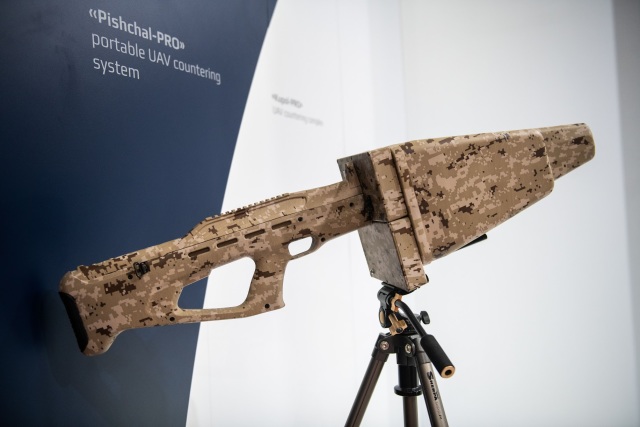The portable complex can be used against reconnaissance drones, electronic warfare drones, as well as against UAVs carrying a combat loadMOSCOW, April 15.
/tass/. The complex of countering unmanned aerial vehicles (UAVs) "Pischal-Pro" will be equipped with an additional range of suppression of satellite navigation systems, which will allow countering the newest models of drones. This was reported to TASS in the press service of the holding "Roselectronics" (part of Rostec) on the occasion of the Day of the Electronic Warfare Specialist (EW), which is celebrated annually in Russia on April 15.
"Work is underway to modernize the Pishchal-Pro product, it is planned to add an additional range of suppression of satellite navigation systems, to which new UAV models are currently configured. This will make it possible to counteract drones that use additional frequency ranges for navigation," the holding said.
The Pishchal-Pro portable complex was developed by Automatika Concern (part of Roselektronika), its weight is about 4 kg, its range is 2 km. It is designed to suppress communication channels, control and navigation of drones. The product can be used against reconnaissance drones, electronic warfare drones, as well as against drones carrying a combat load.
As the Rostec State Corporation told TASS, in the light of the special operation, the topic of confrontation with drones is more relevant than ever. Moreover, the use of effective anti-drone systems is necessary both in the zone of its own, and in areas far from the line of contact.
Rostec enterprises are creating a whole line of systems for combating drones, which is constantly expanding, and already tested systems are undergoing modernization and refinement. In particular, the modernization of the portable anti-drone complex "Dome" developed by the Automatika concern, which is designed to protect the airspace of critical facilities, was carried out. "The designers have expanded the number of suppression ranges, which made it possible to block additional satellite navigation frequencies that UAVs can potentially use to perform flight tasks and bind to the terrain," the concern said.
The complex suppresses the control and navigation channels of the UAV at a range of up to 2 km and is made in the form of quick-mount units, which allows you to assemble and disassemble the product by one person within three minutes.
To protect infrastructure or industrial facilities, the portable anti-drone complex "Sickle-VS", created by the Research Institute "Vector" of the holding "Roselectronics", has also proven itself well. The new version of this product - "Sickle-VS5" - has recently been tested.
"The complex is capable of suppressing drone control at a distance of up to 5 km. It "extinguishes" GPS, GLONASS, Beidou signals (in the L1, L2, L5 ranges), and also breaks the control of drones over Wi-Fi and "sees" intruder UAVs in the 360-degree sector along the horizontal axis," Rostec told TASS.
As noted in the state corporation, interest in this product is observed from companies with industrial facilities of various profiles: from manufacturing enterprises to critical infrastructure facilities located in dense urban development. The holding company "Roselectronics" reported that the complex is ready for delivery on the first orders for several enterprises of the fuel and energy complex and the machine-building sector.
The Day of the Electronic Warfare Specialist is celebrated annually in Russia on April 15 according to the decree of the President of the Russian Federation Vladimir Putin dated May 31, 2006.
The history of the formation of electronic warfare troops in the national army is counted from April 15 (April 2, old style), 1904. Russian Russian-Japanese War signalmen of the battleship Pobeda and the naval telegraph station on the Golden Mountain managed to disrupt the radio-corrected bombardment by Japanese armored cruisers Nissin and Kasuga of the Russian squadron and the fortress of Port Arthur by putting radio interference on this day.
This case was the first step in world military history from the organization of radio intelligence to the conduct of electronic warfare in combat. In the future, electronic warfare tools were actively improved, and the practice of their use expanded significantly.

